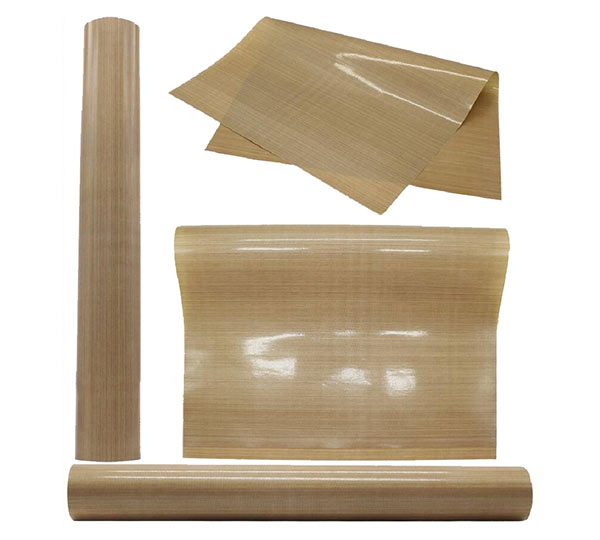PTFE belt, commonly known as Teflon belt, is a versatile and durable material used in various industrial applications. Its outstanding properties, such as chemical and heat resistance, low co-efficient of friction, and non-stick surface, make it an ideal choice for different manufacturing processes. PTFE belts are widely used in industries such as food processing, packaging, textiles, and electronics.

With over 30 years of experience in manufacturing, UniBelt has always been on the edge of innovation. We are a leading manufacturer of light duty conveyor belts, rubber conveyor belts, timing belts and transmission belts in China. We are dedicated to supplying high-performance, high quality products and excellence in service.

In this article, we will discuss the manufacturing process of PTFE belts, as well as its properties and applications.
Manufacturing Process:
The process of manufacturing PTFE belt involves various steps and requires specialized equipment. Here are the steps involved in the production of PTFE belt:
Step 1: Raw material selection
The first and most crucial step in the manufacturing process of PTFE belts is the selection of high-quality raw materials. At Unibelt, only 100% pure virgin PTFE resins are used to ensure the production of durable and high-performing belts. These resins are sourced from reputable suppliers and undergo rigorous testing to ensure their quality and consistency.
Step 2: Mixing of PTFE Resin
The first step in the manufacturing process is to mix PTFE resin with other additives, such as fillers and pigments, to achieve the desired properties. The mixture is then heated and melted to form a homogenous paste.
Step 3 Extrusion
After mixing, the PTFE paste is fed into an extruder, which compresses and extrudes the paste into a long tube with a diameter slightly larger than the final thickness of the belt. The extruded tube is then cooled and cut into manageable lengths.

Step 4: Pre-sintering
The tubes are then placed in a large oven and heated to a specific temperature to remove any moisture and pre-sinter the material. Pre-sintering is necessary to ensure that the resin molecules are aligned in the desired direction.
Step 5: Skiving
The pre-sintered tube is then passed through a skiving machine, which cuts it into thin sheets of the desired thickness. These sheets will form the base of the PTFE belt.
Step 6: Lamination and Vulcanization
In this step, the PTFE sheets are laminated with reinforcing materials such as fiberglass or Kevlar, to provide strength and stability to the belt. The laminated sheets are then put through a vulcanization process, where they are subjected to high pressure and temperature, causing the layers to fuse together and form a continuous PTFE belt.
Step 7: Coating and Curing
To further enhance the properties of the PTFE belt, it is coated with a special PTFE-based emulsion, which gives it its non-stick surface. The coated belt is then cured at high temperatures, further bonding the layers together and ensuring a smooth and even surface.

Step 8: Finishing
In the final step, the PTFE belt undergoes various finishing processes, including cutting, trimming, and punching of holes, to meet the customer's specific requirements. The belt is then inspected for any defects and packaged for shipment.
Step 9: Quality control
The quality of PTFE belts is of utmost importance. Hence, each batch of PTFE belts undergoes strict quality control procedures to ensure that they meet the company's high standards. These quality control measures include inspection of physical properties, dimensional accuracy, and chemical resistance.
Step 10: Packaging and shipping
The final step involves packaging the PTFE belts and shipping them to customers. Great care is taken to ensure that the PTFE belts are packaged properly to prevent any damage during transportation.

Properties of PTFE Belt
PTFE is a highly fluorinated polymer, which gives it its unique properties. It is resistant to most chemicals, including acids, bases, and solvents, making it suitable for use in harsh environments. PTFE also has a low friction coefficient, which means it has a smooth and non-stick surface. This property makes it ideal for applications where materials need to slide easily, such as in the food industry. PTFE is also heat resistant, with a melting point of 327°C, making it suitable for use in high-temperature applications.
Applications:
They are used in a wide range of applications in various industries. Its exceptional properties make it suitable for:
Food Processing and Packaging
They are widely used in the food industry for applications such as baking, frying, and freezing. Its non-stick surface and resistance to high temperatures make it ideal for food processing and packaging equipment, such as conveyors and ovens.
Textile Industry
In the textile industry, it is used in heat sealing machines for sealing seams and for fusing or welding fabrics. The low friction surface of PTFE belts allows for smooth movement of fabrics and prevents them from sticking to the machine.

Electronics Industry
It is also used in the electronics industry, particularly in the production of printed circuit boards (PCBs). The non-stick surface of PTFE reduces the build-up of debris and ensures efficient and precise printing processes.
Chemical Processing
Due to its chemical resistance, they are widely used in chemical processing equipment such as pumps, valves, and seals. It is also used in the production of chemical-resistant hoses and gaskets.
Packaging
PTFE belts are used in packaging machines such as shrink wrappers, heat sealers, and bag sealers. The non-stick surface of PTFE ensures that the packaging materials do not stick to the machine, allowing for efficient operation.

In conclusion, the manufacturing process of PTFE belts at Unibelt involves various intricate steps, from raw material selection to final packaging. This process results in the production of high-quality PTFE belts that are durable, chemically resistant, and can withstand extreme conditions. Through continuous research and development, Unibelt continues to innovate and improve its manufacturing process to meet the ever-evolving needs of its customers.

